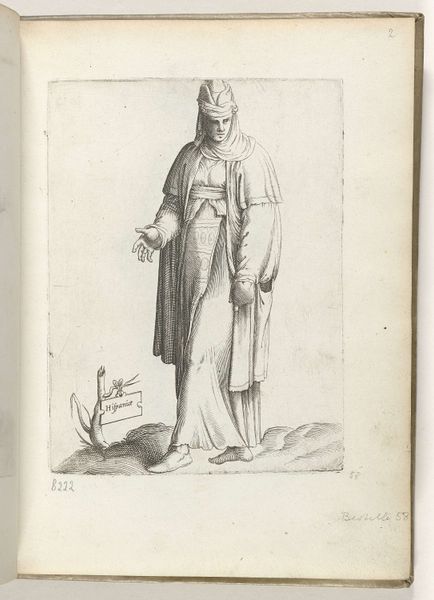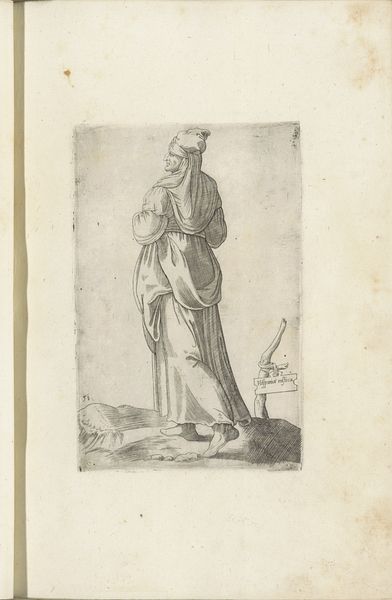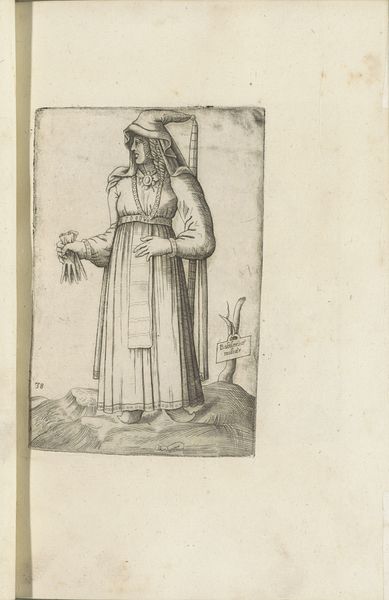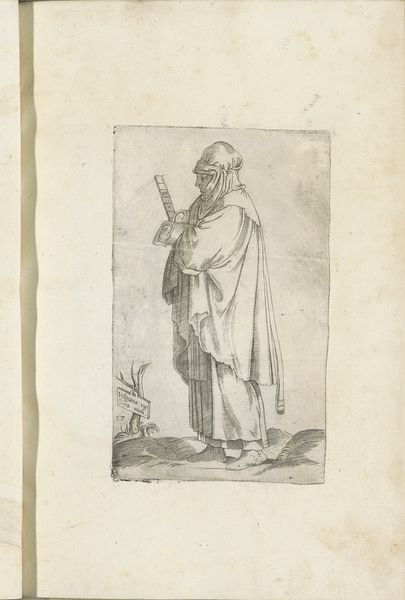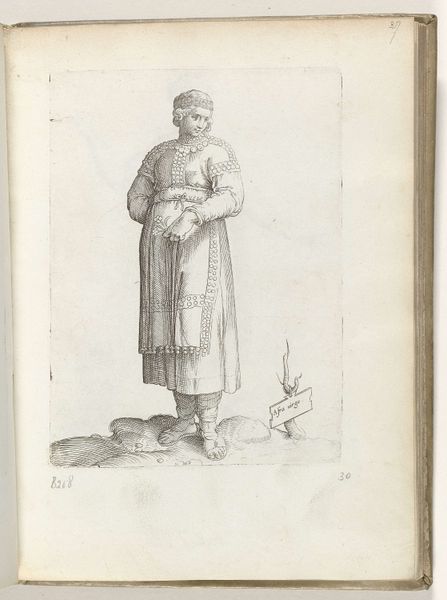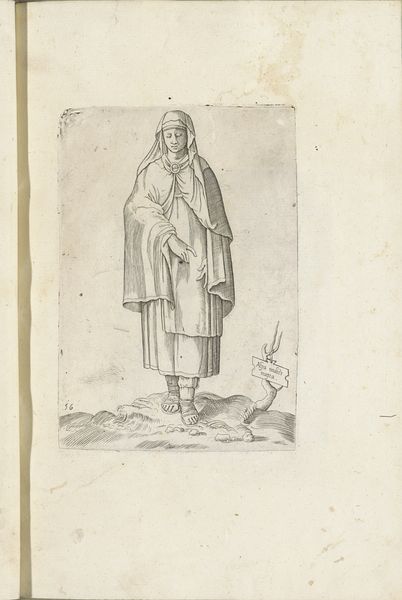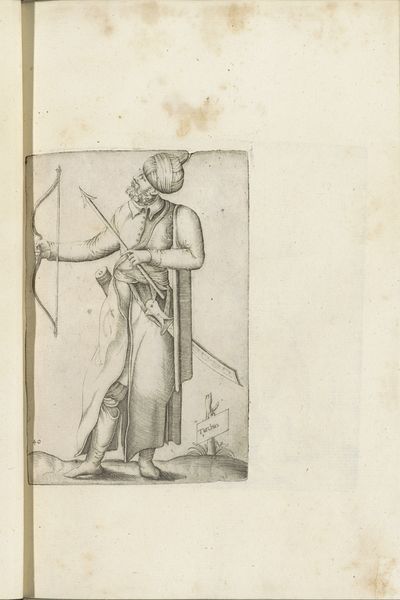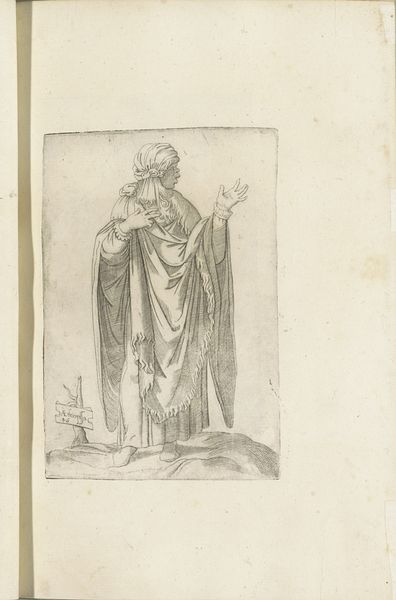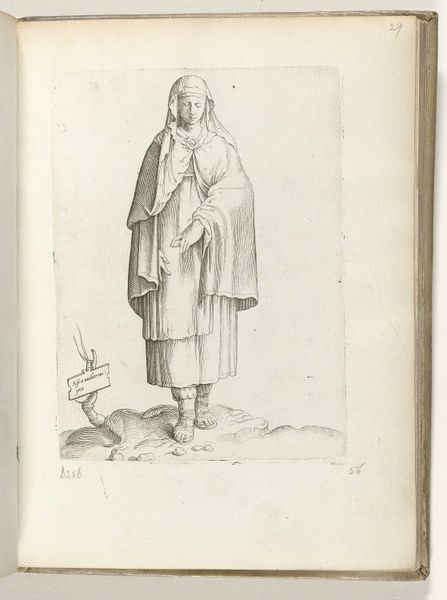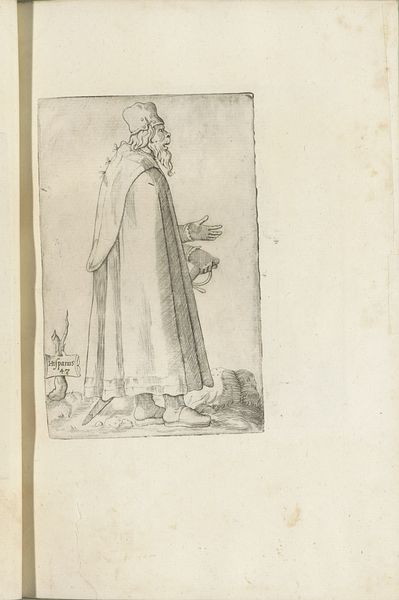
drawing, engraving
#
portrait
#
drawing
#
figuration
#
11_renaissance
#
line
#
italian-renaissance
#
engraving
Copyright: Rijks Museum: Open Domain
Curator: Standing before us is "Spaanse landman ca. 1550," a drawing by Enea Vico dating back to before 1558. It's currently housed here at the Rijksmuseum. Editor: My first impression is one of dignified hardship. The stark lines emphasize the weight this figure carries, both literally, with the sack over their head, and metaphorically, judging by their posture. Curator: Vico's masterful use of line in this engraving is remarkable, isn’t it? Look at how he suggests texture and form simply through varying the density and direction of the lines. It speaks to the laborious process of creating printed images at this time. The sheer act of production infuses the work with a palpable sense of work and grit. Editor: Absolutely. The print's subject is rooted in the socio-economic realities of the Renaissance era. The image raises questions about the value and representation of labor. How does this portrait fit into larger narratives of early European identity and representation? Curator: Consider the materials available to Vico, and how they shaped the image. Engraving on copper, then transferring the image to paper – a complex process. How did that technical process shape what aspects of lived experience could be depicted, and which were necessarily excluded or embellished? Editor: That’s interesting. The figure's clothing, their stance—it's all carefully observed, yet idealized. Vico provides some specificity in detail and at the same time glosses over what surely must have been immense pressures to survive. What did it mean to present this individual to a viewing public who were possibly far removed from their labor? Curator: Indeed, there’s an interesting interplay between art and craft, the labor of the engraver and the labor of the landman, all consumed by different audiences. Editor: The starkness encourages dialogue between then and now. By reflecting on art's connection to society, the historical importance of an engraving like this comes alive, challenging conventional perceptions of a ‘master’ work. Curator: Precisely. By emphasizing these points, we appreciate not just the artwork itself but also the cultural conditions under which it was made and received. Editor: Looking at this image has provoked a needed reflection of the realities behind idealized portraiture, reminding us to consider whose stories are told and how.
Comments
No comments
Be the first to comment and join the conversation on the ultimate creative platform.

